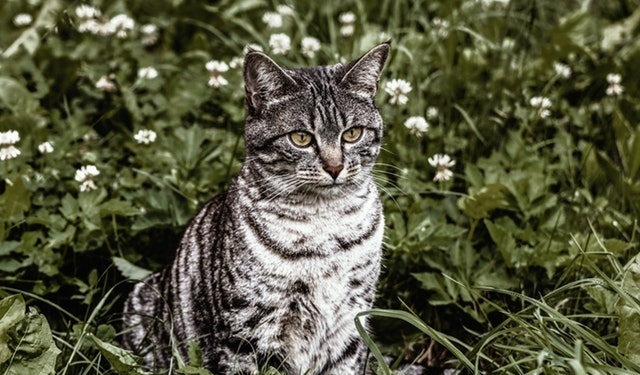22 cat plants
Cats are curious animals by nature, so it’s no wonder they come to sniff new decorative objects or plants newly introduced into the house. In the case of plants, both indoors and outdoors, we run the risk of being toxic to them and causing reactions on the skin of cats when they come into contact with them, or digestive reactions when ingesting them.
- To avoid your cat’s health problems.
- In this Animal Expert article.
- We share a list of good cat plants.
- Some are considered medicinal plants.
- So they are excellent natural remedies to treat different conditions in these animals.
- Others.
- On the other hand.
- Do not have this capacity and therefore act as non-toxic plants for decorative cats.
- Read the article and see which plants are harmless to cats.
If you’re looking for a plant for your cat that isn’t toxic, but also brings health benefits, door grass is what you need. Nepeta cataria, popularly known as cat grass or doorgrass, has an effect on cats that we might describe as amazing. This reaction is the product of nepetalactone, an active substance present in the composition of the plant and that has the ability to stimulate the sensory neurons of the cat. When this happens, the animal becomes over-stimulated, which is demonstrated by rubbing intensely on the plant, licking or biting it.
Catgraus helps relieve stress in cats that suffer from it, and also prevents it from developing, favoring a calm environment and also providing additional mental stimulation. Discover all the properties of the door lawn and feel free to buy one of these plants.
Aloe vera, or aloe vera, is another plant that is safe for cats and is very beneficial for cats, especially for the treatment of skin problems. In addition to its many benefits, it is one of the succulent plants for cats that has the advantage of being able to grow indoors and outdoors, provided you have the sun you need. In addition, you can also take advantage of your properties if you decide to buy one.
It should be noted that the rest of succulents are also suitable for cats, although their health benefits are minor.
By focusing on the benefits of aloe vera for cats, we highlight its effects to alleviate the symptoms of dermatitis and promote wound healing. Thanks to its components, aloe vera has antibiotic, antiseptic, healing, regenerating, analgesic and anti-inflammatory properties. However, although consumed in small amounts, it is not toxic, if your cat bites or eats plants frequently, we recommend that you keep it out of reach, as excessive consumption can cause gastrointestinal problems.
Chamomile and Valerian are good outdoor plants for cats, for many reasons. In addition, they are beautiful and can help you decorate your garden. Starting from chamomile, its infusion can act as a home remedy to remove ticks in cats if applied topically, serves to clean the eyes with an ointment, relieve conjunctivitis (always in addition to veterinary treatment) and soothe irritated skin. The infusion of chamomile, when ingested, also helps treat mild gastrointestinal problems.
Valerian, on the other hand, has a sedative effect on cats, making it an excellent natural tranquilizer for nervous or stressed cats. However, despite its good results, it is essential to know the causes of this state of nervousness or anxiety to be treated.
Aromatic plants not only allow us to decorate our terrace, our balcony or our garden, they can also be used for cooking and, of course, to prepare natural remedies. These same herbs are considered non-toxic plants for cats, so they can also be used as a spice in your food or as a remedy for certain discomforts.
Although there are many aromatic plants, the most suitable for felines are rosemary, thyme, parsley and mint, for their properties. All provide vitamins and minerals, have diuretic, anti-inflammatory, purifying and digestive properties. In addition, each offers special advantages:
Find out how to grow herbs at home in this article and create your own spices.
Arec-bambou, also known as paimeira-areca, is one of the most used indoor plants to decorate homes for its beauty and simple treatments. Plus, it’s a non-toxic plant for cats, so you can use it to bring your home to life without worrying about whether your cat will get damaged if you bite or rub the leaves.
As it is a type of plant that needs to receive indirect sunlight, you will like a bright and warm space in the house, but that does not produce excessive heat. Therefore, it is not uncommon to observe the cat lying next to you, enjoying the same well-being and comfort.
If your question is whether it is a plant that is toxic to cats when consumed, the answer is no. This way, the orchid is on the list of good plant for cats, and you can have one without problem.
There are many types of orchids, and all are also demanded as decorative plants for their extraordinary beauty. However, taking care of these plants is not easy and, therefore, it is necessary to know in depth the basic care of the orchid before buying one. If your cat is one of those who likes to nib to plants and flowers, we advise you not to have an orchid at your fingertips, as this would further slow down its development.
As important as knowing which plants are allowed for cats is which plants are toxic to cats. To do this, watch the video below and learn more about them:
If you want to read articles similar to 22 cat plants, we recommend that you visit our additional care section.

